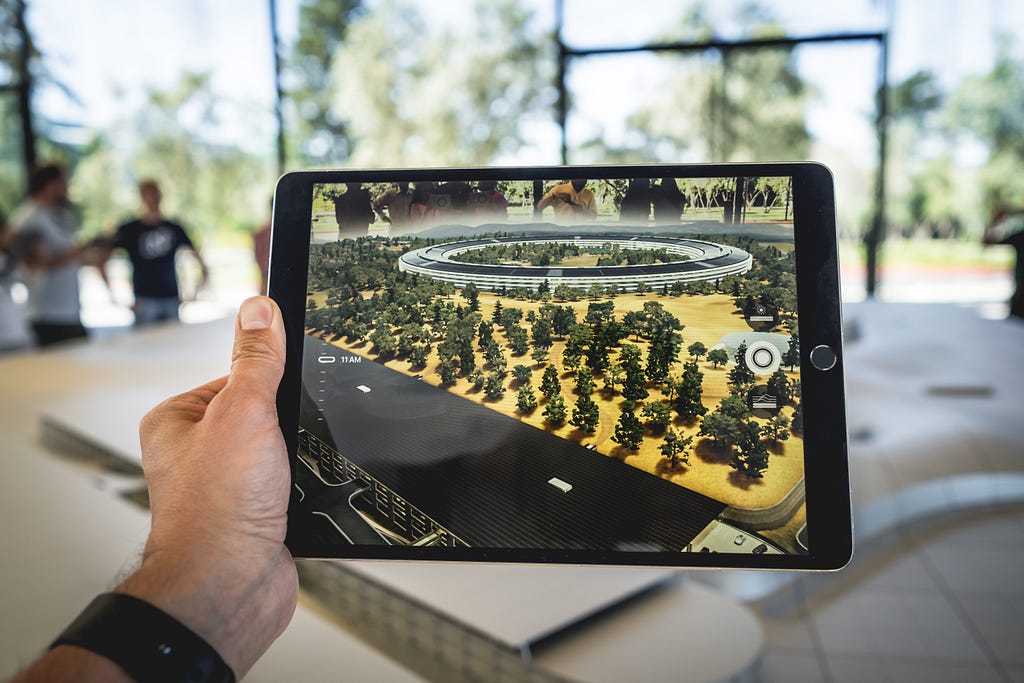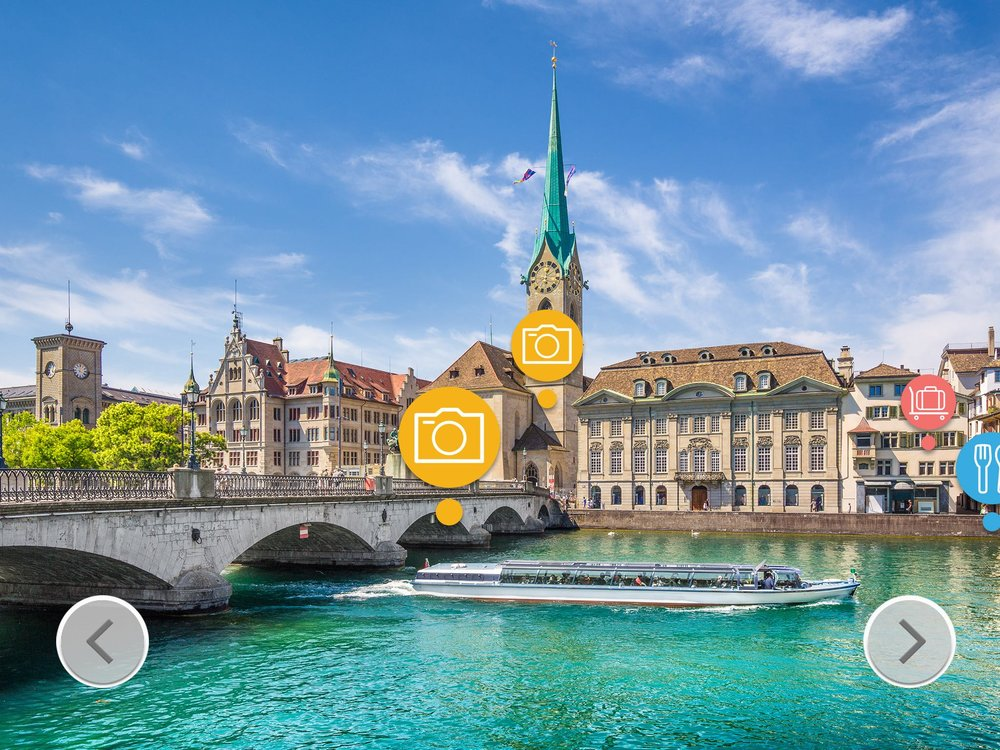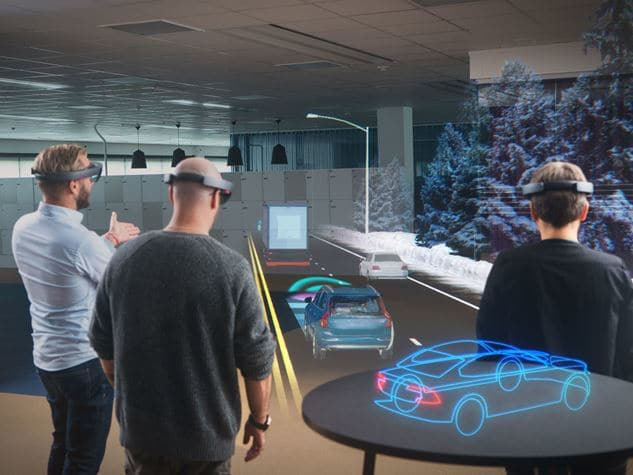Latest news about Bitcoin and all cryptocurrencies. Your daily crypto news habit.

Okay, to be clear, I won’t be talking about PokemonGo or even the Vatican’s Follow JC Go (yes this is a real app through which users chase around Jesus and other Christian figures). While these apps have in one sense put AR on the map, they’ve also done it a disservice — the public now sees AR as merely a way to hunt down cartoon characters and saints in their daily lives.
We don’t need that.
But beneath these heavily used and even more heavily reported apps, there’s a trillion-dollar opportunity coming up. AR is a step into the future, amalgamating the digital world and real world so seamlessly that it feels like one.
I recently played with Magic Leap. Honestly, I’ve never experienced what I experienced on that day. Imagine you’re working on your laptop and a teeny-tiny creature pops up and says “hi” to you. A little creepy? Yes. But definitely interesting.
So far, AR technology has had a hand in melding industries together, rendering obsolete outdated functions, and providing consumers with previously unmatched experiences.
 This whale isn’t real, just so you know.
This whale isn’t real, just so you know.
I expect AR adoption to follow the same arch — though probably not as ferocious — as simple video adoption. Companies who have already implemented AR products have done it for relatively low investment, seen a clear return, and sated consumers’ appetites for shiny new things. Indeed, one survey from August 2018 found 86 percent of respondents expected to go live with an AR service of some type within 12 months.
A look at what’s already out there supports this theory, so let’s dive in. Here are five AR applications generating a bit of hubbub that are absolutely worth checking out.
Real Estate/Construction/Architecture
I know a guy who has built and remodeled homes his entire life. As he started thinking about retirement, he decided he wanted to build a home for him and his wife. But to do that, he said, he’d need to build one home first, live in it for a year, sell it, then build his dream home based on alterations to the first home.
“You just never know exactly what you want until you’ve lived in it,” he told me.
That seems like an awfully roundabout way to build your dream home.
Instead, why not take a walk through a 3D, interactive model of your custom home? This is exactly what Realar has accomplished. Amazingly, the app can convert a variety of 2D floor plans or 3D models in a range of formats into AR walk-throughs. All you need is an open space that can fit the dimensions of the home and a smartphone.
The applications of this are enormous. Builders, architects, developers, and home buyers all have their own uses for the technology, which suggests to me that the firms and companies that offer this service will inevitably create a higher expectation from home buyers.
For evidence of this shift in consumer expectations, all we have to do is look at Sears. They didn’t go digital heavy, and now they’re dead. With the bar set this high, those who don’t offer AR in their experience will inevitably die out.
And so it goes.
Live Events
Record companies may have survived the Wild West period that was Napster (and every P2P sharing service it spawned), but the beating they took left lasting injuries.
Moreover, they still haven’t found a great way to handle the age of streaming despite high profits, considering the backlash from major artists who use these platforms. Meanwhile, performers (minus the handful that follow the traditional path of “making it” on a label) have had to get clever when it comes to earning a living.
One area artists have traditionally had the most control over — and generated the most income from — is the live performance. Live music is hands down their biggest cash cow. In 2016, 88% of Beyonce’s total income came from touring — a hefty $54.7 million.
It seems this is an area where investment in the user experience could pay off handsomely.
So how can performers ensure their live experience keeps up with user expectations?
Eminem thinks AR is the answer.
Development company Drive Studios partnered with the rapper to transform his live show into an exclusive, geo-tagged, time-stamped immersive experience. That’s a mouthful, but it’s a critical definition. It means Eminem is creating an experience that can’t be replicated unless you’re there, which is quite a draw. Now, whether you enjoy the AR experience of knives and chainsaws bearing down on the crowd is subject to taste. :)
Em’s management team decided instead of fighting the influx of smartphone recordings at live shows, they’d go along with it. In the end they created a unique experience for die-hard fans, which will likely solidify Eminem’s place as a pioneer in entertainment.
Travel
I’ve been on tons of walking tours through the world’s historic cities, and they’re for the most part great. These companies are still in business because although I can Wikipedia every structure in the city, I first have to know what that structure is to look it up. And that’s what my guide can do. They can tell me what that obscure, crumbling building is, and I needed them for that information.
Until now.
Etips is available for smartphones and tablets and can identify landmarks in cities, natural features in National Parks, and works of art in museums. Just point your device at it, and the information pops up.
I think this is huge not only for the consumer, but for businesses as well. Entire marketing teams could be dedicated to real-time, AR-based ad targeting. Imagine you point your mobile phone to a downtown street and all the Yelp reviews pop up. Easy to know where to go now? Etips hasn’t completely ventured into this world yet, but I suspect that should be coming soon.
Learning and Development
Books are dead, but that doesn’t mean we’ve lost our appetite for knowledge. If anything, we’ve become insatiable knowledge-eating monsters who devour more information than ever. Last year, one study showed adults now spend more than 12 hours a day consuming media of some form. So how will publishing companies respond to this shift?
Perhaps the answer lies in a book decades old: The Very Hungry Caterpillar.
Puffin has all but secured the book’s continued success for decades to come.
Puffin Books has seen great success in turning this classic children’s book into an interactive, engaging story that children don’t just read — they take part in it.
It should be noted that supplying readers with this hands-on experience, in addition to the beloved book, is yet another revenue stream for Puffin. Francesca Dow, managing director of Puffin Books, told The Guardian in 2015 that The Very Hungry Caterpillar is “one of the most successful books of all time,” and that Puffin was “very lucky to have it.”
By maintaining a focus on the future, and pairing a decidedly old-school story with a new technology, Puffin has all but secured the book’s continued success for decades to come.
Automotive
What happens when Volvo teams up with Microsoft? You get HoloLens, a holographic system that’s helping the carmaker simplify the extremely complicated process of vehicle assembly, and make it digestible for consumers. The system is celebrated as the “world’s first fully untethered holographic computer,” letting users interact with and move holographic images.
Technically, this is “mixed-reality” technology and not strictly AR, but it’s so exciting I feel I have to include it. Volvo has high hopes for the tech, and plans to use it to:
- Help customers understand the incredible engineering that goes into the product
- Demonstrate how Volvos help drivers avoid accidents
- Let customers customize and create their own car affordably
- Ensure customers choose the right make and model for them
Remember in Minority Report when Tom Cruise is swish-swashing holograms all around him? That’s basically what HoloLens is, but made specifically for cars. (Sidenote: Apple credits Minority Report for the inspiration for some of its patents, as do many other tech companies. It’s fascinating.)
Currently, Microsoft is working with 10 companies total, however Volvo is the only one applying the technology to the automotive space.
What’s next?
This is truly a fraction of a fraction of the valuable applications of AR. It’s been observed enough times now to know that even when a new tech trend starts off a little clunky, there’s plenty of room for smoothing. Take texting. In a few years, we went from using a numbered keypad with corresponding letters to T9 predictive text to physical keyboards to touch screens to dictation. Whoa.
Sure, AR’s initial roll out may have been a little clunky. Google Glass was weird. You won’t carry your iPad around with you everywhere. But what happens when Samsung unveils its “smart contact lens” that could power AR anywhere, anytime? Or when carmakers figure out how to overlay content and information about your immediate surroundings onto your windshield?
Once visionaries address these early barriers, it’s the companies that have prepared and positioned themselves to capture the market of AR users that will surpass their competition and future-proof themselves for years to come.
To learn more about what the future holds, check out our blog at Indiez.io.
How CXOs of These 5 Industries Can Future-Proof Their Businesses was originally published in Hacker Noon on Medium, where people are continuing the conversation by highlighting and responding to this story.
Disclaimer
The views and opinions expressed in this article are solely those of the authors and do not reflect the views of Bitcoin Insider. Every investment and trading move involves risk - this is especially true for cryptocurrencies given their volatility. We strongly advise our readers to conduct their own research when making a decision.

